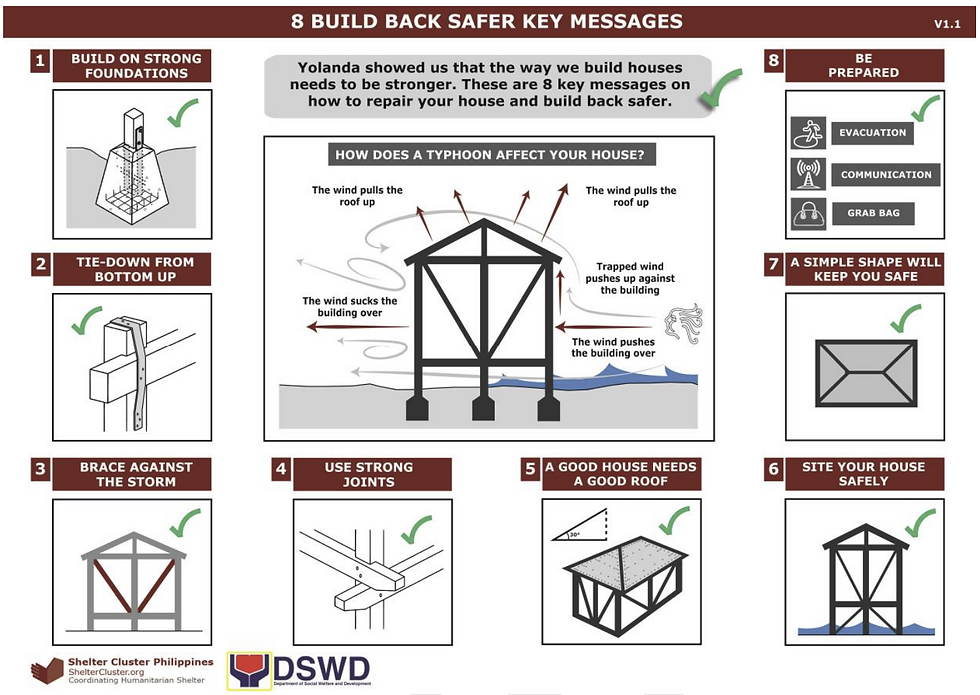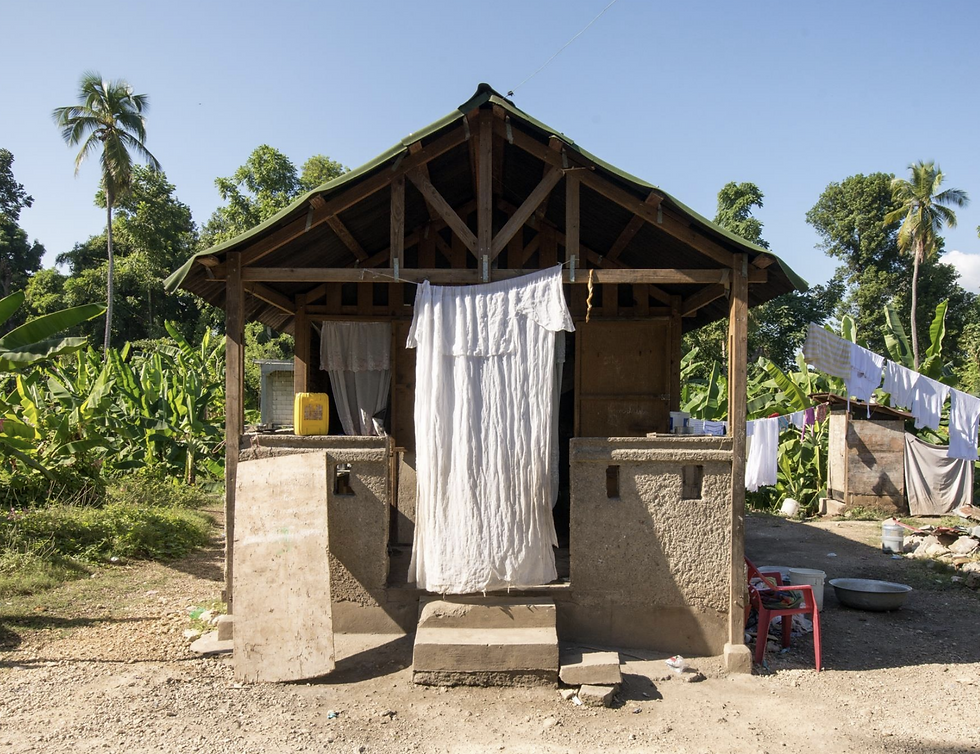The Shelter Cluster is a global mechanism that coordinates humanitarian response to disasters and crises. The following case studies will explore examples of how this was done.
Philippines, 2013

Figure 1: Source: https://www.dw.com/en/taclobans-arduous-recovery-after-haiyan/a-17463609
After Typhoon Haiyan in the Philippines, organisations and communities needed all the assistance they could get. The Shelter Cluster mechanism was there to support the Government of the Philippines to liaise responses to the crisis. The Shelter Cluster helped with coordination, advocacy, provided technical guidance and managed the relevant information and data of various agencies and organisations involved in the response (IFRC, 2015).
The most significant roles that the shelter cluster played in the Philippines was helping agencies to strategize how to best assist recovery and identify what is appropriate. The Cluster coordinated with over 100 partners in providing emergency, transitional shelter, and permanent housing. Of these partners, 69 provided emergency shelter to 570,000 households and 92 of them continued their work to support recovery. The Cluster was also able to coordinate self-recovery assistance for community recovery (IFRC, 2015).

Figure 2: Information for shelter recovery. Source: https://sheltercluster.org/typhoon-haiyan-2013/documents/philippines-shelter-recovery-outcome-assessment-may-2016
In terms of advocacy and humanitarian values, the Shelter Cluster worked on ensuring equity in the aid provided. One of the ways this was done was by providing an avenue in which to speak with one voice as a Shelter Cluster as it reduces confusion and adds gravity to what they want to express (IFRC, 2015). I would suggest this has the potential to be a little problematic as it might quell different voices and valid approaches.
Haiti, 2010
In response to the Haiti Earthquake of 2010, the IFRC convened the Shelter Cluster to coordinate a massive humanitarian effort.
The Shelter Cluster organisation team which ran the Cluster in Haiti consisted of up to 18 people from multiple organisations. The roles included technical experts for designs, environmental advisors, media experts for communication, information management, and a mapping team to provide the full picture of the operation all over Haiti. This was the biggest team deployed by the Shelter Cluster (IFRC, 2011).
The coordination services included representatives from the Cluster team coming together to decide on a strategy; this was the Strategic Advisory Group (SAG). For more technical solutions there was the technical working group that decided on designs, standards, technical solutions, and beneficiary communication. Many subgroups come together in the Cluster effort to work out a plan for all the Shelter actors to follow (IFRC, 2011).
The Shelter cluster also dealt with gathering and dissemination of data, a hub coordinator who made sure that agencies were operating in a coordinated manner, and coordination of land and property issues. There were 8 Shelter Cluster hubs in Port-au-Prince (the Haitian Capital).
The impact of the Shelter Cluster has been such that everyone knows who is working where and what their job is in the response and recovery effort.

Figure 3: T-Shelters, part of the work the Shelter Cluster was involved in coordinating. Source: https://sheltercluster.org/haiti-earthquake-2010/documents/impact-evaluation-improve-living-conditions-most-vulnerable
References
Handicap International. (2017). Impact evaluation: Improve living conditions for the most vulnerable populations affected by the earthquake
IFRC. (2011). The Shelter Cluster: Haiti. https://www.youtube.com/watch?v=29M1V6MfnEk
IFRC. (2015). Shelter Cluster Philippines: Coordinating humanitarian shelter following Typhoon Haiyan. https://www.youtube.com/watch?v=gW3hkgrh3wk
Shelter Cluster. (2016). Typhoon Haiyan (Yolanda) Shelter Response Outcome Assessment.

Comments